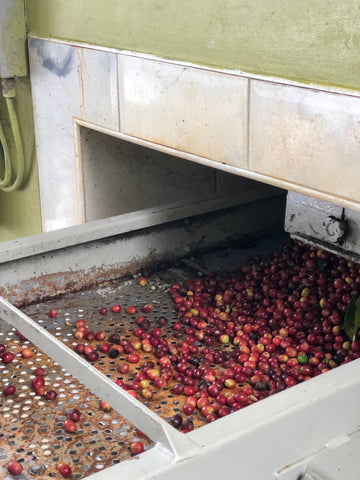
The different coffee drying processes
Time to read 2 min
Time to read 2 min
Coffee is an exotic product, like cocoa, which can only be grown in certain regions of the world.
Before being a drink, it is a green bean that comes from the fruit of the coffee tree, called cherry.

A cherry usually contains two seeds, but sometimes there are more or fewer.
It is initially green in color, before turning red, orange or yellow (depending on the variety) as it ripens.
Once harvested, coffee cherries must be dried to extract the bean, and the method used has a strong impact on the coffee's flavor profile.

Drying is a process that allows controlled fermentation to soften the cherry parchment to more easily extract the beans.
The term “coffee processing” is actually the drying method used to transform the cherries into green beans, which are then roasted.
This is the traditional method, also called “plain coffee” or “natural coffee” because the cherries remain whole.

In countries where the dry season is well defined: Brazil, Ethiopia, Panama, Costa Rica.




This process was developed by Dutch coffee growers in the 17th century on the island of Java. Natural drying was impossible due to high humidity and heavy rainfall. 

In countries with high humidity: Ethiopia, Kenya, Rwanda, El Salvador, Colombia, Panama.

A so-called “hybrid” method, combining aspects of dry and wet methods.
Also called “pulped natural” outside of Brazil in Central America.

There are different degrees of honey processing depending on the percentage of mucilage left on the parchment grains. The more mucilage left, the darker the color of the parchments when dried in the sun. 

Source: book “Coffee is not rocket science”, available from Ma Caféine.
Your cart is currently empty.
Start Shopping









